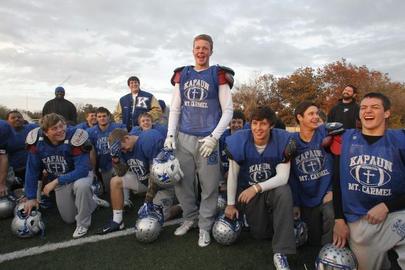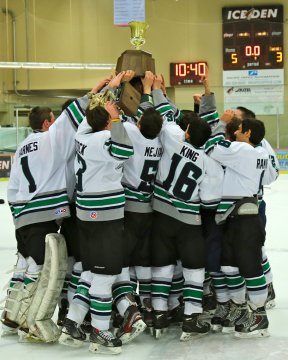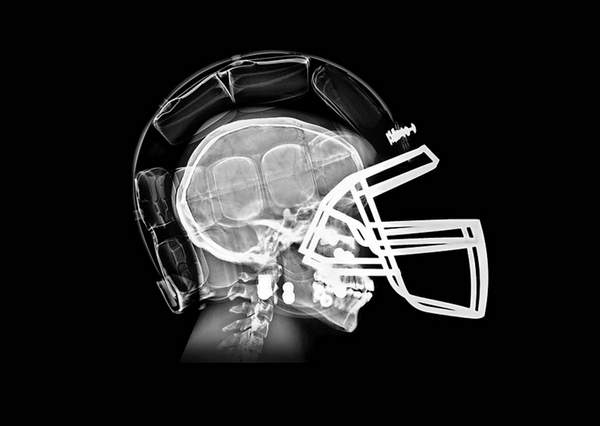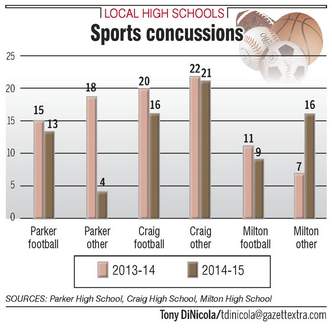
Most parents know the risk of getting a concussion when their child plays football.
With football season just starting, certified athletic trainers are doing tests before concussions actually happen.
Certified athletic trainers normally do concussion testing after death from the incident or serious injuries. But now they want to take extra steps to prevent it before it actually happens.
One parent KSN talked to says it’s important to do the testing now.
“I’m so glad they’ve implemented it,” said Darren Roberts who’s an alumni of Kapaun Mt. Carmel High School and a parent of linebacker. He wants to make sure his son is taking extra steps to be safe.
“I think it’s very important,” said Roberts. “You want to take every precaution you can with your son, your child. Any sport they’re taking, you want to put them in the safest position possible.”
His son, Jacob Roberts, took preemptive testing before the football season.
“They have the kids come in a morning and it’s about a half hour to take the test. They ask them questions and they perform functions and they get a baseline for them,” said Roberts.
Kapaun Mt. Carmel High School Certified Athletic Trainer Morgan Summers says they do baseline testing for all athletes to find out where they are physically.
“What it really helps with is finding out if that athlete is ready to return to play and even to return to the classroom,” said Summers. “We know where they were at before the injury and then where they come in afterward.”
This gives the school the opportunity to monitor the progress of how long their symptoms last and how many symptoms they have.
“An athlete in the past may have been able to deny having a headache, or how severe a headache might have been,” Summers said. “There’s many other symptoms to look for that parents can be aware of that the teachers hand out because we implement the entire staff.”
Taking care of your body is what’s most important to Roberts.
“There’s life after football, life after sports. So it’s always most important that they take care of themselves.”
ORIGINAL ARTICLE:
Most parents know the risk of getting a concussion when their child plays football.
With football season just starting, certified athletic trainers are doing tests before concussions actually happen.
Certified athletic trainers normally do concussion testing after death from the incident or serious injuries. But now they want to take extra steps to prevent it before it actually happens.
One parent KSN talked to says it’s important to do the testing now.
“I’m so glad they’ve implemented it,” said Darren Roberts who’s an alumni of Kapaun Mt. Carmel High School and a parent of linebacker. He wants to make sure his son is taking extra steps to be safe.
“I think it’s very important,” said Roberts. “You want to take every precaution you can with your son, your child. Any sport they’re taking, you want to put them in the safest position possible.”
His son, Jacob Roberts, took preemptive testing before the football season.
“They have the kids come in a morning and it’s about a half hour to take the test. They ask them questions and they perform functions and they get a baseline for them,” said Roberts.
Kapaun Mt. Carmel High School Certified Athletic Trainer Morgan Summers says they do baseline testing for all athletes to find out where they are physically.
“What it really helps with is finding out if that athlete is ready to return to play and even to return to the classroom,” said Summers. “We know where they were at before the injury and then where they come in afterward.”
This gives the school the opportunity to monitor the progress of how long their symptoms last and how many symptoms they have.
“An athlete in the past may have been able to deny having a headache, or how severe a headache might have been,” Summers said. “There’s many other symptoms to look for that parents can be aware of that the teachers hand out because we implement the entire staff.”
Taking care of your body is what’s most important to Roberts.
“There’s life after football, life after sports. So it’s always most important that they take care of themselves.”



